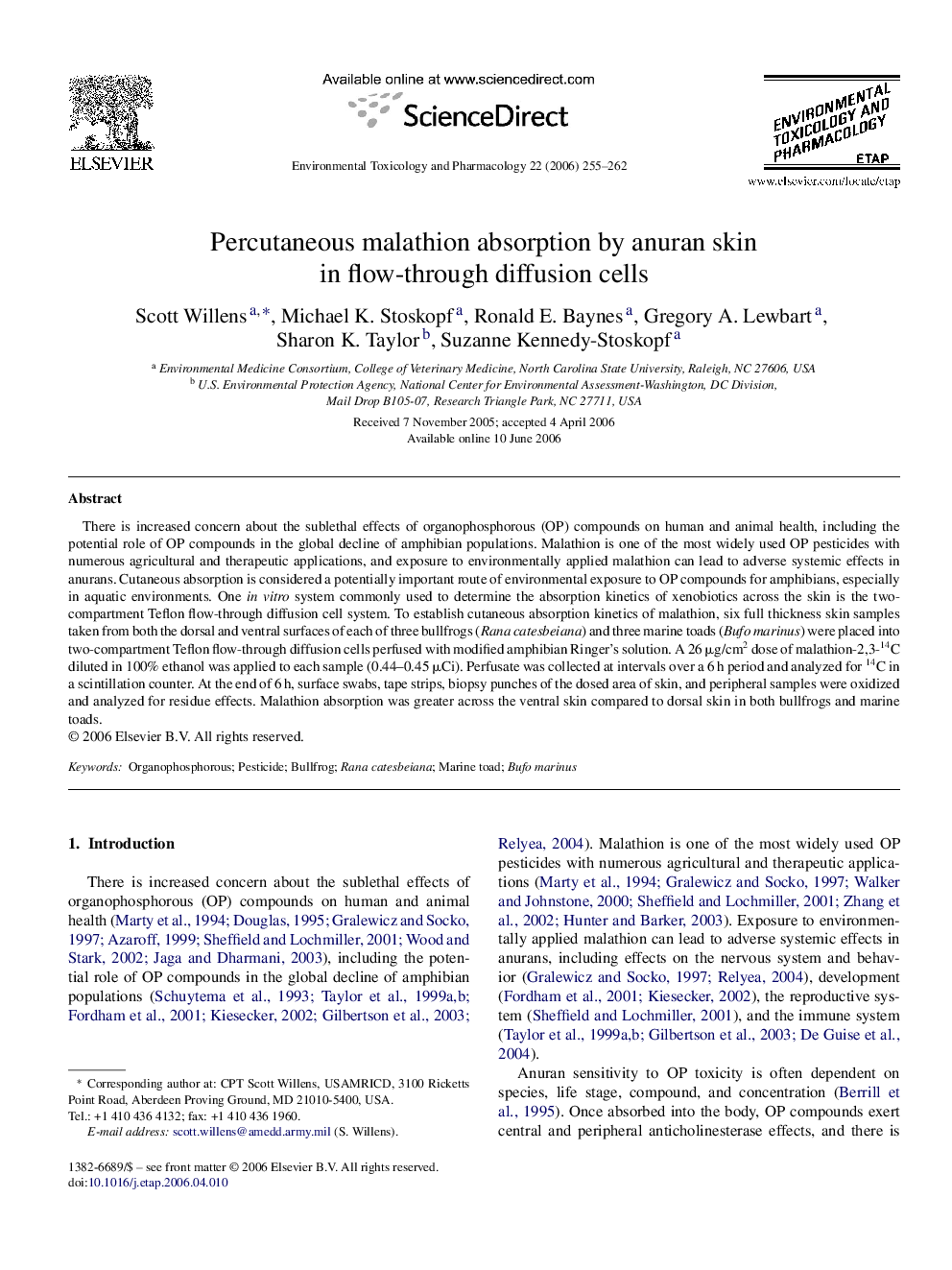| Article ID | Journal | Published Year | Pages | File Type |
|---|---|---|---|---|
| 2584678 | Environmental Toxicology and Pharmacology | 2006 | 8 Pages |
There is increased concern about the sublethal effects of organophosphorous (OP) compounds on human and animal health, including the potential role of OP compounds in the global decline of amphibian populations. Malathion is one of the most widely used OP pesticides with numerous agricultural and therapeutic applications, and exposure to environmentally applied malathion can lead to adverse systemic effects in anurans. Cutaneous absorption is considered a potentially important route of environmental exposure to OP compounds for amphibians, especially in aquatic environments. One in vitro system commonly used to determine the absorption kinetics of xenobiotics across the skin is the two-compartment Teflon flow-through diffusion cell system. To establish cutaneous absorption kinetics of malathion, six full thickness skin samples taken from both the dorsal and ventral surfaces of each of three bullfrogs (Rana catesbeiana) and three marine toads (Bufo marinus) were placed into two-compartment Teflon flow-through diffusion cells perfused with modified amphibian Ringer's solution. A 26 μg/cm2 dose of malathion-2,3-14C diluted in 100% ethanol was applied to each sample (0.44–0.45 μCi). Perfusate was collected at intervals over a 6 h period and analyzed for 14C in a scintillation counter. At the end of 6 h, surface swabs, tape strips, biopsy punches of the dosed area of skin, and peripheral samples were oxidized and analyzed for residue effects. Malathion absorption was greater across the ventral skin compared to dorsal skin in both bullfrogs and marine toads.
